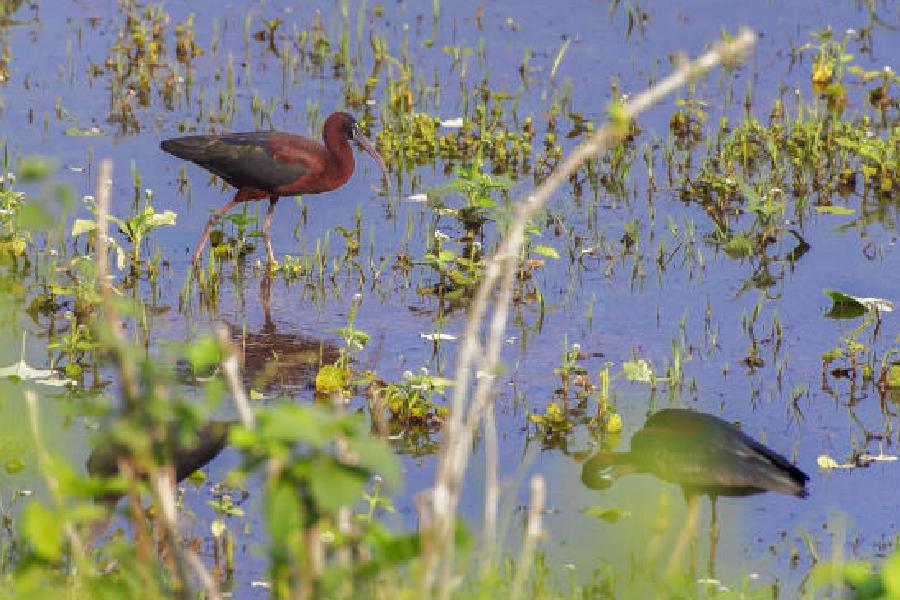Some winter migrants were recorded on the first day of a two-day summer bird count across Bengal on Saturday, surprising many birdwatchers who had expected that winter migrants would have left the state by now.
The second edition of the two-day Poila Boishakh Bird Count will end on Sunday. This is the only summer bird count across the state.
A bird count in April, a birdwatcher said, will reveal the status of resident birds of Bengal.
Among the resident birds that were spotted in large numbers was Glossy Ibis. A flock of 60 birds was spotted in a wetland in Burdwan.
The eBird website, a platform created by the Cornell Lab of Ornithology of Cornell University, says that the species “is found mainly in salty marshes and shallow wetlands.”
The website also says: “Adults mostly dark with iridescent green and reddish tones. Very thin white border surrounding the dark facial skin.”
A compilation of all checklists for Saturday was not available till the evening but one of the organisers said at least 150 species had been recorded from seven south Bengal districts only.
The sighting of some winter migrants, however, surprised many. Kanad Baidaya, a member of the Birdwatchers Society that is organising the bird count said on Saturday evening the sighting of Burn Swallow and Black-winged Stilt came as a surprise.
“Burn Swallow is a winter migrant that breeds in the Himalayan region. They come to south Bengal to escape the very cold winter in the hills. Their presence in south Bengal even in April is not usually anticipated,” said Baidya.
Black-winged Stilt and Pied Avocet are trans-Himalayan migrants that breed in central Asia. Both the birds were spotted in North 24-Paraganas’ Kamduni.
Anyone who wants to participate in the bird count must have an e-Bird account. One can download the mobile application and create an account. Participants need to observe birds for at least 15 minutes if they want their contribution to be counted. The participants will log into their accounts and start the birdwatching activity. Entries will
be made as they spot birds.
In the first edition of Poila Boishakh Bird Count last year, 544 species were recorded.
Annual bird counts help bird watchers spot trends.
Any decline in population or destruction of habitat will show up in such bird counts.
“After a few years or so, a trend will emerge. We will be able to know whether climate change has had any impact on the avian species or population. The Poila Boishakh Bird Count happens during the breeding season. We will also get to know if any species is delaying its breeding,” said Mittal Gala, a project coordinator of Bird Count India.
